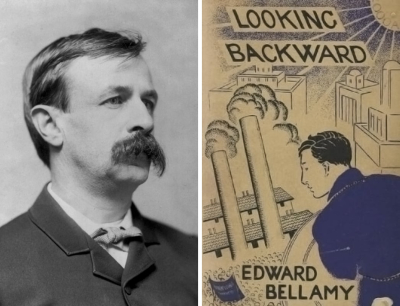
Battle tanks, debit/credit cards headphones, bionic parts……… many of the machines and gadgets we use today were predicted by sci-fi authors long ago. Let's look at a few of them that have become a reality
Debit/Credit Cards
Edward Bellamy's 1888 novel ‘Looking Backward’ was a huge success in its day, but it is best remembered for introducing the concept of ‘universal credit’. Citizens of his future utopia carry a card that allows them to spend 'credit’ from a central bank on goods and services without paper money changing hands.
Battle tanks
One of the best-known science fiction writers of the 20th century was H.G. Wells. In his 1903 story ‘The Land Ironclads’, published in the ‘Strand’ magazine, Wells described war machines that were uncannily similar to the modern tank They were approximately 100 feet long and rolled on eight pairs of wheels, each of which had its own independent turning axle. A conning tower in the top let the captain survey the scene. The first battle tanks were deployed on the battlefield a mere 13 years later, during the Battle of the Somme in World War I, and have been an integral part of every country's armed forces ever since.
In ‘When the Sleeper Wakes’ (1899), Wells describes automatic motion-sensing doors which saw reality 60 years later.
Earbud headphones
When Ray Bradbury published his classic ‘Fahrenheit’ 451 in 1953, portable audio players were a reality. However, headphones were massive and ugly-looking. That's why his description of 'seashells’ and thimble radios that brought an electronic ocean of sound, of music and talk is so amazing. He exactly describes the earbud headphone and Bluetooth, which didn't come into popular use till 2000!
Video chat
The first demonstration of video conferencing came at the 1964 New York World's Fair, where AT&T wowed crowds with its 'picturephone’. The technology has come a long way since then, but the first description of video phones came in Hugo Gernsback's serial tale Ralph 124c 41+ in Modern Electrics magazine in 1911. In it, he described a device called the ‘telephot’ that let people see each other while speaking long distance.
Internet glasses
The protagonist in Charles Stross' 2005 book Accelerando, carries his data and his memories in a pair of glasses connected to the Internet. In 2013, Google came out with a wearable computer called Google Glass fitted to spectacles frames. Wearers could access the Internet using voice commands.
All in one novel
Stand on Zanzibar, a 1968 dystopian* novel by John Brunner which won a number of sci-fi book awards, makes several technological and political predictions. These include laser printers, satellite TV, electric cars and on-demand video broadcasts.
Bionic man
Martin Caidin's 1972 book ‘Cyborg’ is the story of astronaut-turned-test pilot Steve Austin who is severely injured in a plane crash. The government engages a doctor who is researching bionics or the replacement of human body parts with mechanical prosthetics that work almost as well as the original. Cochlear implants for the deaf and artificial hearts are successful modern applications of bionics.
*dystopian-pessimistic description of a society that breaks down. Its opposite is 'utopian’.
Picture Credit : Google




